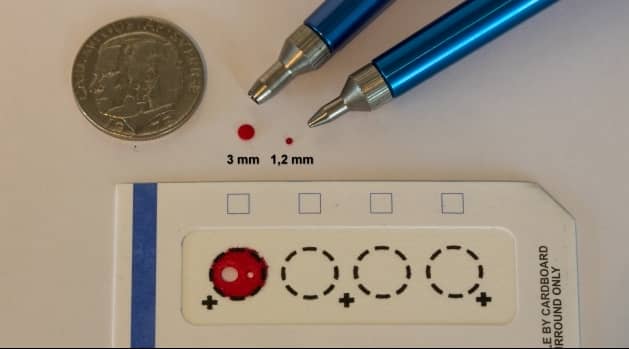As health tech continues to make advancements, technology is trying to make all kinds of diagnoses and treatments minimally invasive. However, blood tests remain the most valuable and reliable diagnostic tool for a variety of problems. The only issue is with the extraction and storage of blood that is both time-consuming and costly. Researchers at Uppsala University are working on ways to use tiny samples of dried blood on filter paper as the frozen blood alternative for storage and testing purposes. Their research was published in Molecular & Cellular Proteomics.
Diagnosis of all medical problems varies in the techniques, but blood carries a treasure of information to your medical health. A variety of biomarkers in the blood can help identify signs of illnesses that sometimes do not even show any symptoms. A regular check of the patient’s blood can aid the doctor to monitor the progression of the disease. Extracting a blood sample requires skilled technicians, takes time, and has a significant cost. If you were to carry a sample from one place to another, it again needs a high degree of precaution. The samples, if not directly sent to the lab for centrifuging, are stored in a freezer at -80° C (-112° F).
The process and it costs reduce the number of blood samples that can be stored making scientific research less effective than it could be. Due to the same reasons, blood sampling is less frequent. The Uppsala team is studying the effectiveness of Dried blood spots (DBS) as compared to the frozen liquid samples. The scientists collected blood spots from newborn babies in screening for congenital metabolic disorders. They stored the samples for over 30 years in biobanks in Sweden and Denmark, at temperatures between -24° C (-11° F) to 4° C (39° F). The same samples were compared with the wet plasma samples at -70° C (-94° F) stored for the same period.
The team studied 92 blood proteins relevant to cancer diagnosis using proximity extension assay (PEA) technique. They also measured how protein detection is affected by the drying process as well as the effects of long term storage. The results showed that decades of storage did not alter the samples significantly. Some of the proteins did reduce to half in quantity after 10 to 50 years. While the plasma samples need to be stored at -70° C (-94° F), the dried blood spots survive well at 24° C (-11° F).
A doctoral student at Uppsala University, Johan Björkesten explained: “Our conclusion is that we can measure levels of 92 proteins with very high precision and sensitivity using [proximity extension assay] technology in the tiny, punched-out discs from a dried blood spot. The actual drying process has a negligible effect on the various proteins, and the effect is reproducible, which means that it can be included in the calculation.”
This development eliminates the need for patients to visit clinics just for blood extractions. They can get a few drops of blood by pricking themselves and post the samples off to the test labs. The technique will help grow the database of blood samples that will no longer require expensive medical freezers. Professor of Molecular Medicine and head of Molecular Tools research group, Ulf Landegren says, “This has several implications. First, you can prick your own finger and send in a dried blood spot by post. Second, at a minimal cost, it will be possible to build gigantic biobanks of samples obtained on a routine clinical basis. This means that samples can be taken before the clinical debut of a disease, to identify markers of value for early diagnosis, improving the scope for curative treatment.”
Source: Uppsala University

